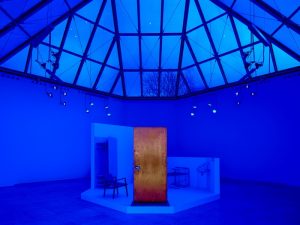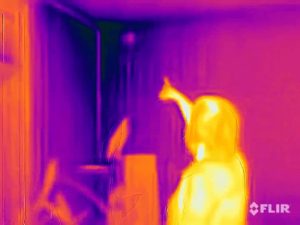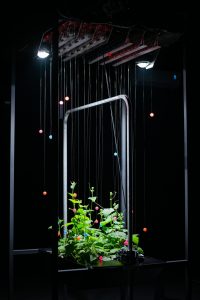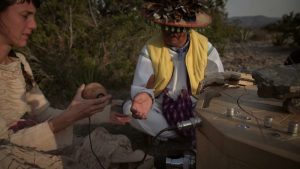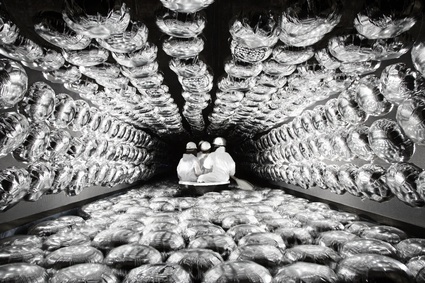 Photo credit: Nick Ballon
Photo credit: Nick Ballon
Super-Kamiokande (Super K) is an underground neutrino observatory in Japan. 1000 meters under the surface of the earth, a tank containing 50,000 tons of extremely pure water and surrounded by over eleven thousands golden photomultiplier tubes keeps watch for supernovas in our galaxy. The photomultiplier tubes register the amount of light created when a neutrino meets an electron of ultra-pure water. The encounter is marked by a real Sonic Boom, an explosion faster than the speed of the light. On the computer screens of scientists who study the phenomenon, a sonic boom looks like a ring of blue light that travel to the surface.
Scientists postulate that neutrino, one of the most abundant building blocks of nature, can give us insights into the basic nature of matter, the universe, and the laws of physics. Yet, scientists know almost nothing about neutrino. As David Wark, a physics professor at Imperial College London, explained: “Just because a physical law takes place, it doesn’t mean that it is obvious on a scale that we are built to comprehend. A human might have the same chance to understand the ultimate theory that my cat has to do calculus, but I hope not.”
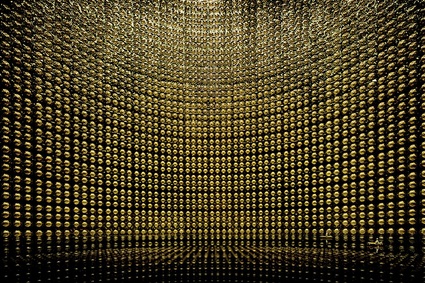 Andreas Gursky, Kamiokande, 2007 © Adagp, Paris, 2008 : Andreas Gursky / Courtesy: Monika Sprüth / Philomene Magers (bigger version of the image)
Andreas Gursky, Kamiokande, 2007 © Adagp, Paris, 2008 : Andreas Gursky / Courtesy: Monika Sprüth / Philomene Magers (bigger version of the image)
Last November, Nelly Ben Hayoun (designer of The Soyuz Chair) invited the public to join scientists from Imperial College London and Queen Mary University of London for a voyage aboard a dinghy through the seas of particle physics. Not in the real Super-K but in the SHUNT lounge, a night-club buried 10 m under the London Bridge area.
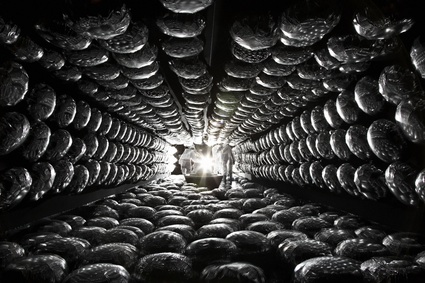 Photo credit: Nick Ballon
Photo credit: Nick Ballon
Called Super K Sonic Booooum, Nelly Ben Hayoun’s installation/performance attempted to demonstrate the visual equivalent of one of those massive sonic booms that take place inside Super K each time a neutrino meets an electron of extremely pure water. As ultra-pure water doesn’t exactly abound in London clubs, the designer used the water from the nearest fire hydrant and turned the place into a 15 by 5m long swimming pool. Before stepping inside the rubber dinghy, participants were requested to don a pair of white boots, a white coat, a helmet and listen to the security measures: do not touch the machinery, keep your hat on at all time, declare any rocks in the mine…. Five Imperial College London physics researchers, and seven PhD students are currently working on the T2K neutrino oscillation experiment, which uses Super K. Three of them, Professor Dave Wark , Dr Yoshi Uchida and Dr Matthew Malek, jumped on board to guide and inform visitors through the world of particle physics. And all around people, 600 balloons. Inflated one by one.
The balloons inflated at SHUNT represent the ‘photomultiplier tubes’ which cover the surface of the Super K. Super K Sonic Booooum re-creates the rings of blue light and a massive explosion (designed by sound artist Tim Holden) punctuates the experience every 10 minutes.
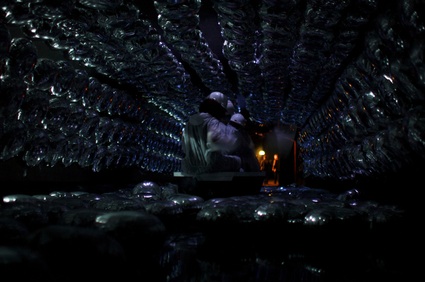 Image credit: Hayeon Yoo
Image credit: Hayeon Yoo
Super K Sonic Booooum aims to make arid, hard-core physics more accessible to the general public, to help them understand the power of elementary particles that are everywhere around us without us ever noticing them. Every night during the performance, 170 people queued to get the neutrino experience.
SUPER K SONIC BOOOOUM by Nelly Ben Hayoun- Shunt november 2009-editing Laura Ben Hayoun from nelly ben hayoun on Vimeo.
If you happen to be in London on February 11, at 6 pm, Nelly Ben Hayoun will be giving a talk about Super K. To participate, please register at the AlterFutures group page.
Previously: The Soyuz Chair by Nelly Ben Hayoun and The Cloud Project by Zoe Papadopoulou and Cat Kramer.

